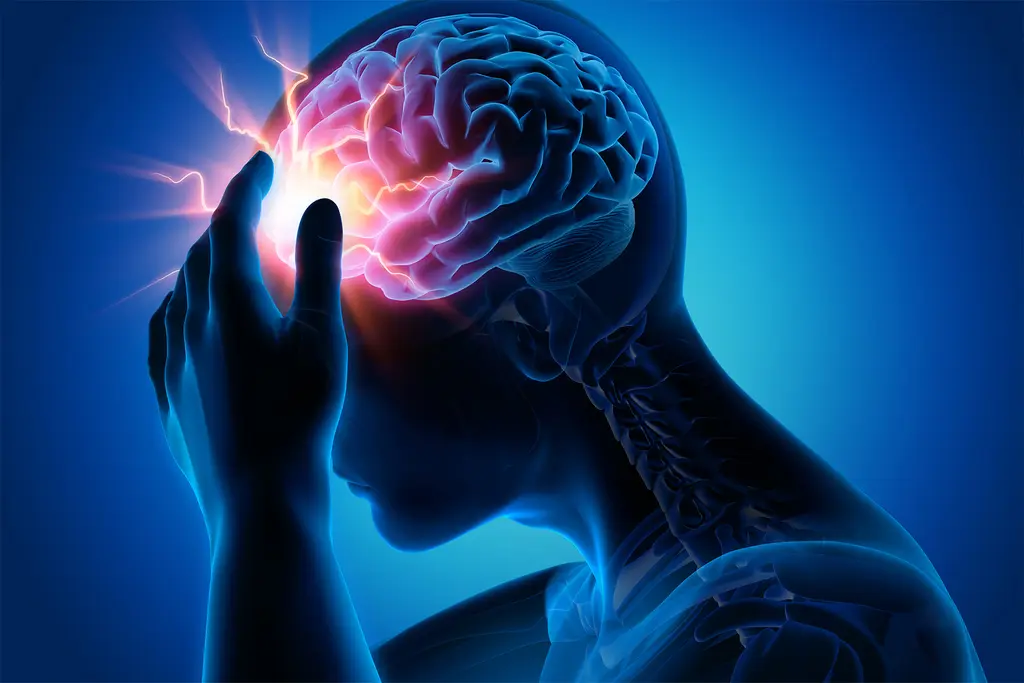
If you think migraines timed to your menstrual cycle are just something you have to suffer through month after month, think again.
“Menstrual migraine is a common phenomenon and there are very useful treatments to make this a more comfortable time,” says Huma U. Sheikh, MD, a headache specialist and CEO of New York Neurology Medicine.
How can I tell if it’s menstrual migraine?
If your migraine starts anywhere from 2 days before your period to 3 days after, you have menstrual migraine. But you can also get migraines at other times, like when you’re ovulating, Sheikh says.
Menstrual migraine attacks tend to be more severe and last longer. And you’re typically more sensitive to light around this time than with other migraine attacks.
If there seems to be a connection between migraine attacks and your menstrual cycle, hormones are the likely cause. “Using a headache diary or app can be helpful in determining if there’s a clear pattern,” Sheikh says.
Why do I get a migraine during my period?
It’s all about hormones. “During the course of a normal cycle, your estrogen levels rise until about day 14 of your cycle,” says Steven A. Rabin, MD, a gynecologist in Burbank, CA. That’s when you start to ovulate and make more progesterone.
Around day 27 or 28, both hormones drop back down to a normal level. “The sudden drop of estrogen can trigger a migraine headache for many women,” Rabin says.
What helps with menstrual migraine?
There are lots of ways to manage and treat your menstrual migraines. These include mini-preventive treatment, acute treatment, and hormonal treatment.
Mini-preventive treatment
You can sometimes stop menstrual migraine attacks before they start or lessen how severe they are with prevention techniques.
“This is called mini-prophylaxis or mini-prevention, or taking daily or regular medication around the time of your menstrual cycle,” Sheikh says.
One option is taking nonsteroidal anti-inflammatory drugs (NSAIDs) like ibuprofen, naproxen, or fenoprofen calcium (Nalfon) two times a day for 5-7 days. Do this 2-3 days before your period starts and throughout.
Another option is estrogen supplementation. You can use a pill, vaginal gel, or patch before and during your period to stop the natural estrogen dip that triggers migraine.
“We give patients a very low dose of plant-derived natural estradiol,” Rabin says. It comes in the form of a prescription patch. Every month, you put the patch on your skin about 1 day before your migraine typically comes on.
“It’s important to track your cycle and find this day so you can get what I call the estrogen parachute, which prevents your estrogen levels from falling off a cliff and triggering the migraine,” Rabin says. You wear it about 3-4 days, then take it off.
Other mini-prevention techniques include taking magnesium starting on day 15 of your cycle and taking triptan medication two times a day throughout your period.
Acute treatment
If you’re in the middle of a menstrual migraine attack, you can take medicine to ease the pain. It’s most effective if you take it early.
Your doctor may recommend a fast-acting triptan or selective serotonin receptor agonist. Most triptans are pills. Some are available as injections under the skin or as nasal sprays and powder.
Options include:
- Almotriptan (Axert)
- Eletriptan (Relpax)
- Frovatriptan (Frova)
- Naratriptan (Amerge)
- Rizatriptan (Maxalt)
- Sumatriptan (Imitrex, Tosymra)
- Zolmitriptan (Zomig)
Your doctor might also suggest taking an NSAID with the triptan. Taking a multitreatment approach may help, too, Sheikh says. For example, you take a pain reliever while also using a heating pad to manage other period symptoms.
CGRP (calcitonin gene-related peptide) antagonists are another option. CGRP is a molecule involved in causing migraine pain. CGRP antagonists block the effects of CGRP. They include rimegepant (Nurtec ODT) and ubrogepant (Ubrelvy).
Continuous prevention
If you’ve tried other methods and they don’t work, or if your period is irregular, your doctor may recommend continuous preventive treatment.
One type of continuous prevention is taking birth control pills without breaking for a monthly period. Instead of taking a placebo pill for 7 days, you keep taking active pills. This keeps your hormones from dropping and triggering migraine. You can also do this with a vaginal ring. After you take the ring out, put a new one in right away instead of waiting until your period is over.
Your doctor may recommend medication that changes hormone levels, like leuprolide (Lupron). Or they may suggest using the lowest possible dose of estrogen in your hormonal contraception.
Botox is a good option, too. It’s FDA approved for migraine and works by blocking pain signals in the nerves. It can take time to work, so you may need more than one treatment. Your doctor may prescribe this if other preventive treatments don’t work.
Neuromodulation treatments can be used during an attack or to prevent one. They send signals to your brain and nervous system using electrical or magnetic waves or heat to calm brain activity. Some are portable; others are surgically implanted.
What should I avoid?
You can manage your pain better by avoiding triggers or things that make you feel worse. Try keeping a migraine diary to identify triggers and sensitivities. Alcohol, dehydration, and stress are common ones. Heat and light may also make you feel worse.
Avoid alcohol around your period. Try to drink 1.5-2 liters of water every day. If you have light sensitivity or heat sensitivity, try staying in a cool, dark room.
Can lifestyle choices help menstrual migraine?
“Regular exercise and a healthy diet have been shown to reduce overall menstrual symptoms and can help with migraine attacks,” Sheikh says. A good, consistent sleep schedule can also help. Try limiting coffee and energy drinks if they cause problems with your sleep.
Learn to manage stress better. Try relaxation techniques. “Yoga and mindfulness can be a really helpful tool to help regulate your hormones and make this time easier,” Sheikh says.
Which menstrual migraine treatment is right for me?
Your doctor can help you decide which options are best for you. It may be a combination of strategies, including mini-prevention, acute treatment, and lifestyle changes. Or they may recommend continuous birth control.
“You have many useful options and most of them are safe,” Sheikh says. But everyone’s different and it depends on many factors. “It’s important to take an individual approach,” she says.
Show Sources
Photo Credit: Stockbyte / Getty Images
SOURCES:
Steven A. Rabin, MD, gynecologist, Burbank, CA.
Huma U Sheikh, MD, New York Neurology Medicine.
American Migraine Foundation: “Menstrual Migraine Treatment,” "Botox for Migraine,” “Neuromodulation for migraine treatment: An overview,” "ORAL AND INTRANASAL TRIPTANS FOR MIGRAINE."
Cleveland Clinic: “Menstrual Migraines (Hormone Headaches).”
Johns Hopkins Medicine: “Headaches and Women: What Do Hormones Have to Do With It?”
American Migraine Foundation.
